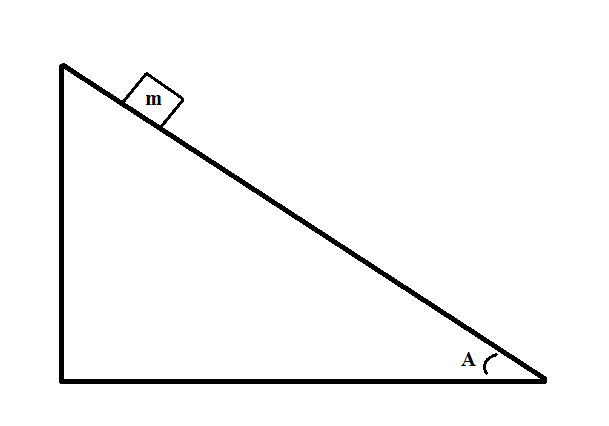Impulse and Momentum
Help Questions
AP Physics 1 › Impulse and Momentum
A bullet weighing 


Explanation
Using the equation of momentum,
we can compare the initial and final scenarios and set them equal to each other to solve for the final velocity of the block (don't forget to convert the units of 

A 

Explanation
We begin by writing down the definition of an object's linear momentum
We then find the magnitude of the momentum by taking the square root of the sum of squares of its components.
A blue rubber ball weighing 








At rest, 
At rest, 
Explanation
Because we are solving for two velocities (two unknowns), we need two equations. We can use the conservation of linear momentum:
Because we know that the collision is elastic, we know that kinetic energy is conserved:
The red ball starts at rest so
The above equations can then be simplified and one can solve for 

Negative implies the ball is moving to the left.
One car with a mass of 400kg is traveling east at 

Explanation
Since the collision is completely inelastic, momentum is conserved but energy is not. Furthermore, the two cars stick to each other and travel as one. The equation for conservation of momentum is as follows:
There are two inital masses with different velocities and one final mass with a single velocity. Therefore, we can write:
Rearranging for final velocity, we get:
At this point, we can denote which direction is positive and which is negative. Since the car traveling west has more momentum, we will consider west to be positive. Substituting our values into the equation, we get:
Since this value is positive, the final answer is 
A popular topic in early space exploration was how to safely return modules back to the surface of the earth. Early designs contained materials that could only withstand impulses of up to 

No; the impulse experienced is
Yes; the impulse experienced is
No; the impulse experienced is
Yes; the impulse experienced is
More information is needed to solve
Explanation
We need to use the equation for impulse to solve this problem. In fact, the time given is completely irrevelevant:
Plugging in our values:
This is less than the threshold, so no, nothing becomes structurally compromised
Which of the following explains why when we land on our feet, we instinctively bend our knees? Hint: think about the relationship between force, impulse, and time.
By bending our knees we extend the time it takes us to stop, which diminishes the impact force
By bending our knees we use a greater force to stop, which makes the impulse smaller
When we bend our knees we extend the time in which we apply the force that stops us, so our impulse is greater
When we bend our knees we extend the time in which we apply the force that stops us, so our impulse is smaller
By bending our knees we extend the time it takes us to stop, which increases the impact force
Explanation
Say that, when we hit the ground, we have a velocity 

Note that the initial momentum does not depend on the impact force nor on how much time it takes to stop. The initial momentum depends on the velocity we have when we first hit the ground. This velocity is given by whatever happened before we hit the ground, which no longer concerns us since we only care about what happens from the moment we first hit the ground till the moment we stop. Yes, the time that passes for you to stop is very small, but it is impossible for it to be zero. So we have that the change in momentum (impulse) is a constant:


Remember that any change in momentum for a given mass occurs because its velocity changes. The velocity of the mass changes due to an acceleration and an acceleration is caused by a force. This gives us a relationship between force and impulse:
In our scenario, 




Jennifer has a mass of 



Explanation
Using conservation of momentum
Solving for
Plugging in values:
(A negative value is assumed for Tommy's direction for simplicity, a negative could have been used for Jennifer's instead, it will yield the same result.
A dump truck is traveling with a large load and a lot of momentum. The truck now travels faster, doubling its velocity. How does the momentum change after the truck doubles its velocity?
The momentum doubles
The momentum is zero
The momentum remains unchanged
The momentum quadruples
The momentum is halved
Explanation
Using the equation for momentum,
If the mass stays constant and the velocity doubles, the momentum must double as well to balance the equation.
Consider the following system:

If the block has a mass of 


Explanation
To calculate the momentum of the block, we first need to know the velocity of the block. This can be found using the equation for the conservation of momentum:
If we assume that the final height is zero, we can eliminate initial kinetic energy and final potential energy, getting:
Substituting expressions for each term, we get:
Cancel out mass and rearrange to solve for velocity:
We can use the horizontal distance traveled and the angle of the slope to determine the initial height:
Now that we have the initial height, we can solve for final velocity:
Finally, we can now use the equation for momentum to solve the problem:
A 


None of these
Explanation
Using conservation of momentum:
The man and the skateboard are stuck together, and thus become one mass:
Plugging in values:
Solving for

















































































